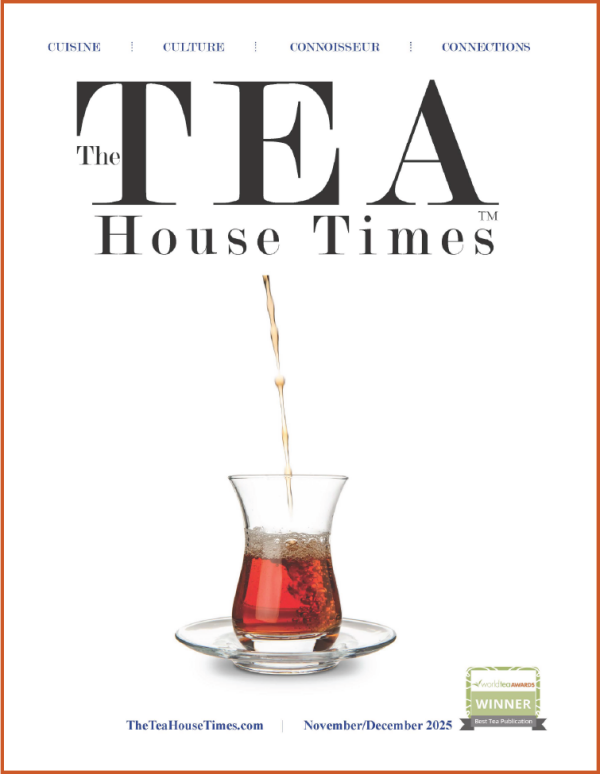

 by Linda Villano, owner, SerendipiTea
by Linda Villano, owner, SerendipiTea
 We’ve all heard the story…….once upon a time at the 1904 St. Louis World’s Fair an Englishman named Richard Blechynden attempted to introduce America to Indian black tea (America at this time drank mostly green tea). Due to a heat wave, the idea of tasting hot cups of tea was not well received.
We’ve all heard the story…….once upon a time at the 1904 St. Louis World’s Fair an Englishman named Richard Blechynden attempted to introduce America to Indian black tea (America at this time drank mostly green tea). Due to a heat wave, the idea of tasting hot cups of tea was not well received.
Desperate, Blechynden poured ice into a batch to try to induce the sweltering fair-goers to sample his tea. Iced-Tea was born & became the most popular thirst quencher of the fair.
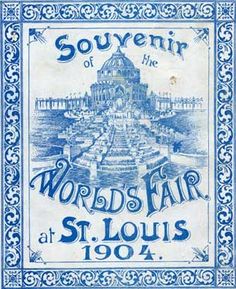
Historically, tea was being sipped cold prior to this creatively edited event. Iced Tea was being served in the South years before the St. Louis World’s Fair. Proof lies in a newspaper clipping which lists items served at a Nevada, Missouri reunion for ex-Confederate veterans:
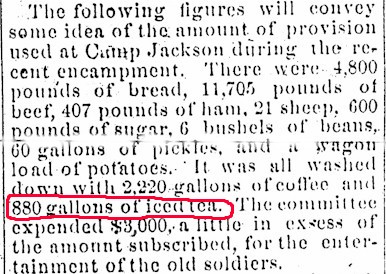
Ref: September 28, 1890 issue of the Nevada Noticer
In the 1800’s tea was a base ingredient in boozy punches which were usually served cold. And with the increasing availability of ice & then refrigeration in the mid-late 1800’s the popularity of chilled tea followed the steady rise of thermometers eventually becoming a year-round staple.
Despite the lore, the oldest printed iced tea recipe pre-dates the St. Louis World’s Fair by 25 years. A telling entry, found in a cookbook called Housekeeping in Old Virginia, by Marion Cabell Tyree (published 1879) reads:
"Ice Tea. - After scalding the teapot, put into it one quart of boiling water and two teaspoonfuls green tea. If wanted for supper, do this at breakfast. At dinner time, strain, without stirring, through a tea strainer into a pitcher. Let it stand till tea time and pour into decanters, leaving the sediment in the bottom of the pitcher. Fill the goblets with ice, put two teaspoonfuls granulated sugar in each, and pour the tea over the ice and sugar. A squeeze of lemon will make this delicious and healthful, as it will correct the astringent tendency."
Now let’s return to the 1904 St. Louis World’s Fair & enter the East Indian Pavilion where Richard Blechynden (India Tea Commissioner & Director of the East Indian Pavilion) did indeed realize that, despite being free, the hot tea wasn’t moving due to the heat wave.
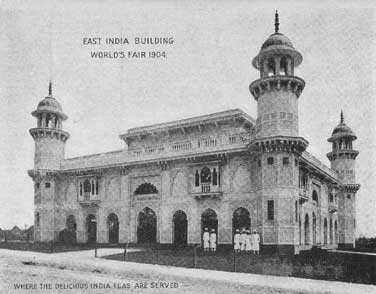
The quick-witted Blechynden filled large bottles with the hot Indian black tea, placed them on stands upside down & allowed the tea to flow through iced lead pipes. The resulting iced tea being dispensed freely was a hit. Author Linda Stradley reports on her site www.whatscookingamerica.net that “After the fair, Blechynden took his lead pipe apparatus to New York City, offering free iced tea to shoppers at Bloomingdale Brothers Department Store, demonstrating iced tea is a desirable summertime drink.”
Interestingly, Pamela J. Vaccaro writes in her book Beyond The Ice Cream Cone - The Whole Scoop on Food at the 1904 World's Fair:
"Both hot tea and iced tea appeared on most restaurant menus at the Fair - at the Barbecue, Fair Japan, the Old Irish Parliament House, the Louisiana and Texas Rice Kitchen, Mrs. Rorer's East Pavilion Cafe, and so on. It is highly unlikely that all these restaurants jumped on the bandwagon of Blechynden's "new idea," and scurried to the print shops to have their menus reprinted!
What really "stirs the pot" is that "Richard Blechynden" was listed as an official concessionaire (No. 325) "to serve tea in cups and packages" at the Chicago World's Fair in 1893 - 11 years before the one in St. Louis. The financial records from the exposition do not list any ledger entries for Blechynden - which raises the question of whether he actually showed up or was just late with his report. But, if he had been there, it would have been odd that he would not have realized that his product was already being sold in hot and cold versions. It would likewise be odd that, in the 11 intervening years, he would have been totally oblivious to the drink's inclusion in cookbooks and on menus."
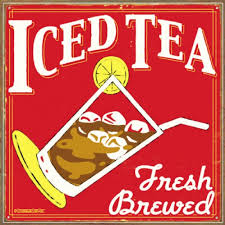
June is National Iced Tea Month & everyone has their own home-brew techniques.
There are a few basics, however, that are worth noting.
Water: As with hot tea preparation good water quality is crucial for optimal results. Water does indeed affect the flavor of tea so try to use filtered or spring water if the tap water is hard & heavy with minerals or isn’t a nearly neutral pH (low acidity).
Hot Brew: When preparing cold tea (Camellia sinensis) it’s advisable to make a concentrate because the ice that will be added upon serving will dilute the beverage. Start with ½ the amount of water that would be used to make a hot cup or batch & steep the usual time. Once steeped, remove the leaves & cool to room temperature. Add ice to each glass when serving. If drinking at a later time, put the concentrate in the refrigerator without ice only after it has reached room temperature. If making a sweet tea, add sugar, honey, agave, etc. while hot so the sweetener will dissolve evenly. Adjust the ratios below for future batches so that the strength of the concentrate suits your personal taste.
1 cup yield = 1 teaspoon tea steeped in 4 ounces boiled water. Steep the usual time. Cool to room temperature. Add ice to the glass when ready to consume or serve.
1 gallon yield = 1 ounce tea steeped in ¾ - ½ gallon boiled water. Steep the usual time. Cool to room temperature. Add ice to each glass when ready to consume or serve.
If making a chilled fruit blend or tisane which contains no Camellia sinensis then the steep time is not crucial. Once cooled to room temperature the batch can be steeped overnight in the refrigerator & there is no need to extract the contents until ready to serve.
Cold Brew: As with the Hot Brew, it’s advisable to make a concentrate first because the ice that will be added upon serving will dilute the beverage a bit. Start by adding tea leaves to a glass pitcher containing ½ the amount of cool water that would be used to make a hot cup or batch. Using a tea filter or tea sock to contain the leaves is very helpful when it comes to extracting them, but not necessary. Leave the batch in the refrigerator overnight or for at least 6 hours. Remove tea leaves then add ice to each cup when serving or drinking. Adjust the ratios of future batches so that the strength of the concentrate suits your personal taste.
1 cup yield = 1 teaspoon tea steeped in 4 ounces cool water. Leave in the refrigerator overnight or for at least 6 hours. Extract Leaves. Add ice when ready to consume or serve.
1 gallon yield = 1 ounce tea steeped in ¾ - ½ gallon cool water. Leave in the refrigerator overnight or for at least 6 hours. Extract Leaves. Add ice to each glass when ready to consume or serve.
Sun Tea: For this method tea leaves or tea bags are steeped in a container of water left outdoors in the sun for a period of time. This is not ideal as the liquid could quickly become a breeding ground for harmful bacteria. Commercial establishments serving food & drink to customers should avoid this practice. For more information, see link .
Iced Tea Ice Cubes: Iced tea will remain fresh for a couple of days in the refrigerator. If you’ve made too much to consume in that time period pour some into Ice Cube Trays. The resulting Iced Tea Cubes are excellent refreshers for seltzer water, plain water, juice & iced tea.
Cloud Control: Why is my iced tea clouding? What can be done to prevent it? We hear it a lot. When tea “creams down” or clouds it is not an indication of poor quality nor does it indicate that the batch is not potable. There are a number of possibilities for clouding which are easily remedied.
Quick Fix: Try adding a bit of hot or boiled water to the cloudy batch ~ this usually does the trick. A pinch of baking soda might also clear the clouds without affecting the flavor.
Water Quality: As indicated earlier water quality is crucial & could be the culprit. Hard water is heavy with minerals which don’t dissolve easily. If you’re confident that the water is not the issue then temperature might be.
Cool to Room Temp: Before refrigerating or adding ice be sure to cool the hot brew to room temperature. Doing so will give certain solids the tea leaves release into the liquid (theaflavins) enough time to dissolve.
Too often we read that inferior tea clouds when iced. Not True! Any type of tea, black particularly, could have the propensity to cloud; it’s not something that is easily determined. For a thorough report on clouding see Joshua Rigsby’s article entitled “Clouds in You Cup? Iced Tea Clouding 101” in the August 2011 issue of Tea & Coffee Trade Journal: http://catalog.proemags.com/publication/81aaedea#/81aaedea/30 .
On a positive note, cold brew tea doesn’t cloud! Statistics show that the vast majority of tea consumed in the USA is iced. Hot Brew or Cold Brew, regardless the favored method, it can’t be denied that this simple beverage is no longer just a summer-time refresher, it’s an American staple.
Here’s one for the road!
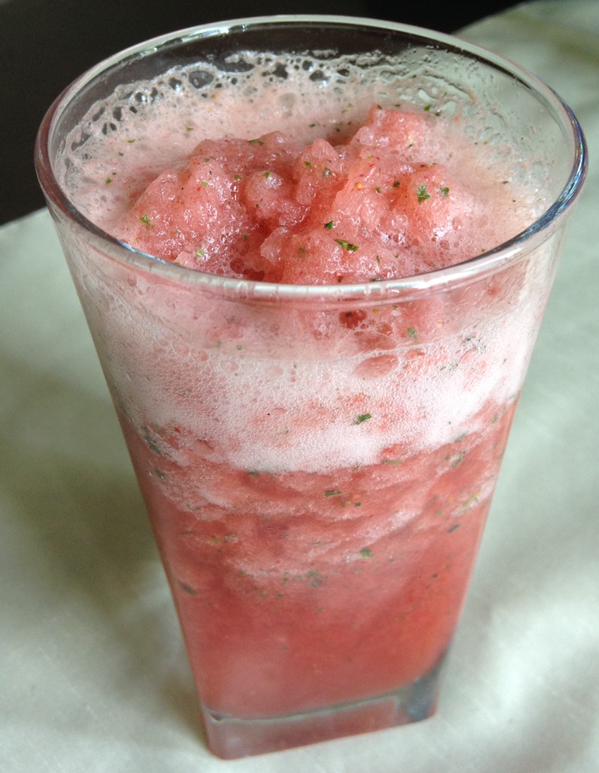
Here's a fab recipe from Inspired by Tea: Strawberry Mint Ice Tea Slushy
~ Linda Villano, SerendipiTea.com
Automatically run a search for all posts by Linda Villano, HERE.
- - -
GO TO BLOG HOME FOR ARCHIVED ENTRIES & SEARCH AUTHORS / TOPICS
© All content and images are copyright of author unless otherwise noted.
- - -
LINDA VILLANO co-founded SerendipiTea.com in 1995 with Tomislav Podreka. With a passion for all things Tea, she oversees all aspects of the business; including client consulting, concept and design, staff training, sourcing and product development (recipe creations). Having grown up in a family of restaurateurs and chefs, she considers her role as a purveyor of premium teas & tisanes a natural continuation of her family’s culinary tradition. Linda is a published illustrator and writer. Her illustrations appear in Tomislav Podreka’s book, SerendipiTea: a guide to the varieties, origins and rituals of tea, and she writes articles about tea for trade publications.
Linda also writes for TeaCourse.com - check it out for more in depth knowledge on all things tea.
- - -
THIS NEWS OR BLOG POST IS SPONSORED & PUBLISHED BY TheTeaHouseTimes.com
The Tea House Times is published 6x per year (in print or via download) plus weekly eNews.
SINGLE ISSUES | SUBSCRIBE | ADVERTISE | CONTACT
SOCIAL MEDIA - Follow us @teahousetimes
EDUCATION - TeaCourse.com | TeaEtiquetteCertified.com | TeaCourseFastTrack.com
SHARE THIS ↓
